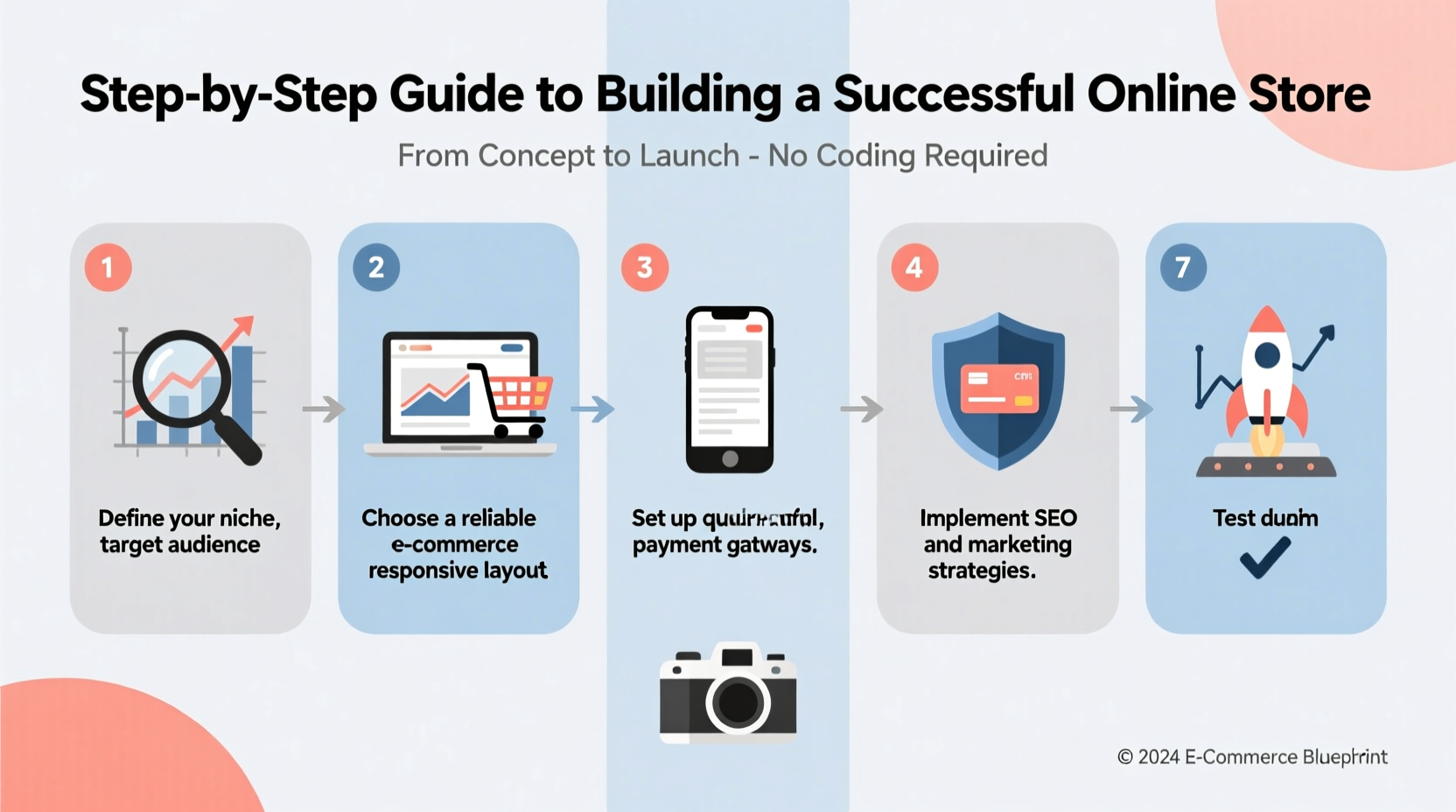Building an online store today is more accessible than ever, but success depends on strategy, execution, and attention to detail. This guide walks through the essential steps to create a functional, scalable, and customer-friendly e-commerce site—starting from zero. Whether you're launching a niche product line or expanding an existing brand, these actionable insights will help you avoid common pitfalls and build a foundation for long-term growth.
Selecting the Right E-Commerce Platform

The platform you choose shapes your store’s capabilities, scalability, and maintenance needs. While dozens of options exist, three stand out for beginners and growing businesses: Shopify, WooCommerce (on WordPress), and BigCommerce.
| Platform | Best For | Monthly Cost (Starting) | Technical Skill Required |
|---|---|---|---|
| Shopify | Beginners, fast setup | $29 | Low |
| WooCommerce | Customization, full control | $10–$50* (hosting + domain) | Medium to High |
| BigCommerce | Scalability, built-in features | $29 | Low to Medium |
*Costs vary based on hosting provider and add-ons. WooCommerce requires separate hosting and domain registration.
Designing for Conversion and Trust
A visually appealing site isn’t enough—your design must guide visitors toward purchasing. Focus on clarity, speed, and trust signals.
- Navigation: Use clear categories, a visible search bar, and intuitive menus.
- Mobile Optimization: Over 60% of e-commerce traffic comes from mobile devices. Test responsiveness across screen sizes.
- Page Speed: Aim for under 3 seconds load time. Compress images, minimize plugins, and use a reliable host.
- Trust Elements: Include SSL certificates, return policies, contact information, and customer reviews.
“A well-designed e-commerce site removes friction between interest and purchase. Every extra click or unclear label costs conversions.” — Dana Patel, UX Lead at CommerceLabs
Key Design Checklist
- ✅ Homepage highlights best-selling or featured products
- ✅ Product pages include high-quality images, clear pricing, and size/color selectors
- ✅ Shopping cart icon is visible on every page
- ✅ Checkout process has no distractions (e.g., navigation links)
- ✅ Contact and FAQ pages are easily accessible
Product Setup and Inventory Management
Accurate product presentation builds confidence and reduces returns. Each product should have a dedicated page with comprehensive details.
- Write compelling titles: Include brand, product type, and key feature (e.g., \"Organic Cotton T-Shirt – Unisex Fit, Eco-Friendly Dye\").
- Use high-resolution images: Show multiple angles, lifestyle shots, and close-ups of materials or textures.
- Detail specifications: Size charts, material composition, care instructions, and weight.
- Pricing transparency: Display discounts, shipping costs, and taxes early in the funnel.
- Inventory tracking: Enable stock alerts to prevent overselling, especially during promotions.
If you plan to scale, integrate inventory management tools like TradeGecko or Stocky. These sync with your sales channels and update stock levels automatically.
Mini Case Study: The Handmade Candle Co.
A small artisan candle business launched using Shopify. Initially, they used blurry phone photos and vague descriptions like “lavender scent.” Sales stalled. After revamping their site with studio-quality images, detailed burn-time info, and ingredient sourcing stories, conversion rates increased by 67% within six weeks. Customer service inquiries about scent strength dropped by 80%, proving that clarity reduces friction.
Setting Up Secure Payments and Shipping
Nothing kills a sale faster than a broken checkout or unexpected fees. Your payment and shipping systems must be seamless and transparent.
Payment Gateways
Offer multiple trusted options: credit cards, PayPal, Apple Pay, and Google Pay. Shopify Payments, Stripe, and Square are reliable choices. Avoid requiring account creation before checkout—guest checkout should be available.
Shipping Strategy
- Determine whether you’ll offer flat rates, real-time carrier calculations, or free shipping thresholds.
- Clearly state delivery timelines and international availability.
- Consider fulfillment services like Amazon MCF or ShipBob if handling orders in-house becomes unsustainable.
Pre-Launch Testing and Go-Live Timeline
Before going public, rigorously test every aspect of your store. A single broken link or failed transaction can damage credibility.
7-Day Pre-Launch Checklist
- Day 1–2: Test all product pages and image galleries. Verify prices and variants (e.g., sizes, colors).
- Day 3: Run through the entire checkout process using test transactions.
- Day 4: Confirm email notifications (order confirmations, shipping updates) are working.
- Day 5: Check mobile responsiveness and form functionality (contact, newsletter signup).
- Day 6: Review SEO elements: meta titles, descriptions, alt text for images.
- Day 7: Launch a soft opening with friends or a small email list to gather feedback.
Once confident, set a launch date and promote it across social media, email newsletters, and any pre-existing audience platforms.
FAQ
How much does it cost to start an online store?
Basic stores can launch for under $300/year. This includes domain ($15), hosting (if self-hosted, ~$100), e-commerce platform (~$30/month), and initial marketing. Costs rise with custom design, apps, and advertising.
Do I need a business license to sell online?
In most countries, yes—especially if you’re selling taxable goods. Check local regulations. In the U.S., you may also need an EIN and sales tax permit depending on your state.
Can I run an online store without holding inventory?
Yes. Dropshipping and print-on-demand models allow you to sell products without managing stock. However, profit margins are typically lower, and quality control is limited.
Conclusion: Turn Your Store Into a Sustainable Business
Creating an online store is just the beginning. The real work starts after launch—driving traffic, optimizing conversions, and building customer loyalty. Use analytics tools like Google Analytics and heatmaps to understand user behavior. Refine your messaging, expand your product lines based on demand, and prioritize excellent post-purchase communication.
Your store isn’t just a website; it’s a living business ecosystem. Stay agile, listen to customers, and iterate often. With the right foundation, even a modest start can grow into a profitable, sustainable brand.









 浙公网安备
33010002000092号
浙公网安备
33010002000092号 浙B2-20120091-4
浙B2-20120091-4
Comments
No comments yet. Why don't you start the discussion?